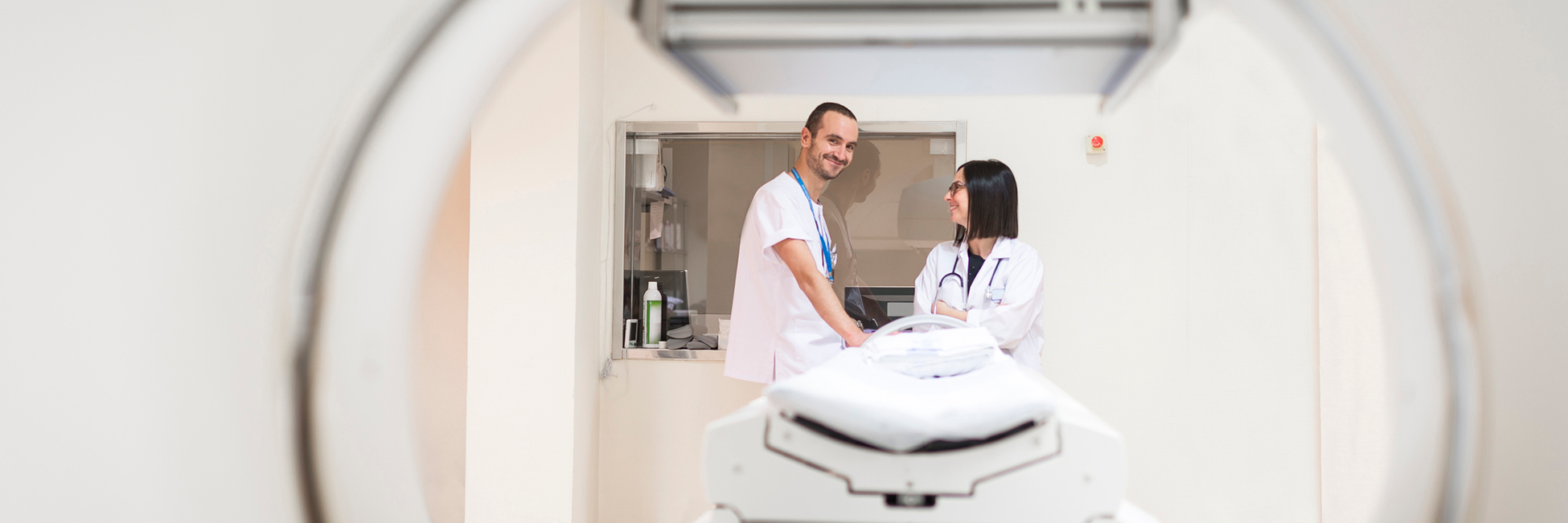
Test Recommendations and Site of Care Optimization
Where do you usually send your patients who need a diagnostic or screening test? Of course, you choose a high quality testing facility because you want your patients to get the best possible test so you can be confident that the results are accurate. But there's another factor that's a concern for many people: the cost of care. With that in mind, providers can help patients get a particular type of screening without breaking the bank.
So then the question becomes: Which location is the most cost effective?
Factors that Affect the Cost of Care for Patients
Here are some of the factors that influence how much patients pay for recommended care:
The Purpose of the Test
The purpose of the test can affect the cost. For example, the Brem Foundation to Defeat Breast Cancer points out that a diagnostic mammogram almost always costs more than a screening mammogram. For one thing, Medicare, Medicaid, and almost all insurance companies will pay the cost of a screening mammogram for women 40 and older, but not all health insurance companies will cover the cost of a diagnostic mammogram.
Where Your Patient Lives
Costs for diagnostic tests can vary based on location—where your patient lives and where they will get screened. For example, a March 2020 study in JAMA Internal Medicine noted a range of costs for mammograms, from $150 to $750. Costs were at the lower end in states like Alabama and Arkansas, whereas in states such as New York, California, Michigan, Wisconsin, and Alaska costs were higher than average. And while the costs can (and do) vary from state to state, they can also vary within a state from city to city. Some experts also caution that costs may be higher in areas with fewer providers, like rural areas.
The Setting for the Test or Screening
The setting for the test can also have an impact on the bottom line. Patients can typically get a screening test like an MRI or a colonoscopy in one of these types of facilities:
- Doctor's office
- Hospital
- Freestanding outpatient facility or surgery center
Some types of tests offer even more alternative sites of care. In some cases, patients might not even have to go into a building at all. For example, mobile units, like vans, bring mammograms right out into the community.
It’s important to know that the setting can have a big effect on the price tag.
Outpatient centers tend to be less expensive than hospitals
Some estimate that an MRI performed in a hospital will likely run patients $1,000 more than an MRI performed in an imaging center. Similarly, a CT scan that's administered in an outpatient center can be significantly less costly than one administered in a hospital. For example, NewChoiceHealth puts the average cost of a CT scan in an outpatient imaging center at $525, but the average price soars to $4,750 at an inpatient facility.
Yet, many people aren't even aware of the cost differential until their bill arrives. According to a 2018 study from the National Bureau of Economic Research (NBER), many patients often unknowingly bypassed lower-priced providers when seeking out a lower-limb MRI.
But the NBER study also notes that referring physicians can have a significant influence on where their patients wind up seeking care. A freestanding imaging clinic with an excellent reputation may be an option patients might be interested in considering, particularly with the recommendation of their provider.
The Patient's Insurance Coverage
Insurance coverage can also affect the price the patient will need to pay for a diagnostic screening test. For example, Bankrate.com recently noted that the average cost of a colonoscopy is $3,081, but not everyone will pay that amount because both location and insurance coverage will have an effect.
A person without insurance will be responsible for paying the entire bill, while a person with health insurance may be on the hook for a relatively low deductible—or it could go well beyond $1,000. The reason for the variation: most pay the deductible that their health insurance plan dictates, and some have insurance plans with much higher deductibles than others have.
Your patient's insurance may cover some things but not others. For example, there might be requirements that determine what type of sedation must be used or who can administer sedation for a procedure such as a colonoscopy. The health plan might cover the cost of an anesthesiologist, or it might cover the cost of a certified registered nurse anesthetist. In-network providers and facilities will cost less than out-of-network providers and facilities. Health plans may also cover only the outpatient tests, like MRIs and CTs, which are conducted outside a hospital setting for most patients.
In summary, your patient's insurance coverage will largely dictate which location will be the most cost-effective for them when it comes to getting a particular diagnostic test.
Balancing Evidence with Patient Cost
Providers are focused on providing evidence-based care, including for diagnostic and screening tests, but they can also help reduce patient cost through site of care optimization.
EviCore's Site of Care solution was designed to help providers choose the highest-quality and most cost-effective facilities for diagnostic and screening tests for their individual patients, including colonoscopies, CTs, MRIs, and mammograms.
EviCore also supports Choosing Wisely, the initiative maintained by the American Board of Internal Medicine (ABIM) Foundation and supported by many national physician organizations, to reduce the overuse of diagnostic tests and other low-value services.
With EviCore's Site of Care solution, you can feel confident that you serve your patient's interests by providing the best care at the lowest possible cost.